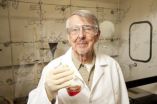A group of computer engineers at Vanderbilt University is convinced that the basic technology is now available to create robot assistants that can perform effectively in the often-chaotic environment of the emergency room. The specialists in emergency medicine at Vanderbilt University Medical Center are enthusiastic about the potential advantages. So, the two groups have formed an interdisciplinary team to explore the use of robotics in this critical and challenging setting.
Team member Mitch Wilkes, associate professor of electrical and computer engineering, presented an overview of the group's thinking on Monday, Dec. 6, in a paper titled, "Heterogeneous Artificial Agents for Triage Nurse Assistance," at the Humanoids 2010 conference held in Nashville.
The paper proposes a system of cognitive robots that gather medical information and take basic diagnostic measurements and ultimately provide tentative diagnoses to the human staff in order to address the critical concerns facing emergency departments in major hospitals: shortening the time that patients must wait, relieving the strain on overburdened emergency room staff and reducing the number of mistakes that are made,
"Advances in humanoid robotic design, in sensor technology and in cognitive control architectures now make such a system feasible," Wilkes said.
According to Senior Associate in Emergency Medicine Karen Miller, "When the engineers approached us with this idea, we were thrilled. We thought their ideas were really interesting and we like the idea of developing new and innovative ways of doing things."
These days about 40 percent of ER patients arrive with potentially life-threatening conditions, so they must be attended to immediately, Miller estimated. The robotic system, which they have dubbed TriageBot, is designed to handle more effectively the other 60 percent, who show up with less pressing problems.
If the project is successful, five years from now the emergency room will not look much different than it does today, with the exception of a series of electronic kiosks near the registration desk, similar to those that most airlines have installed at their check-in desks, along with special "smart" chairs and a mobile robot or two monitoring patients in the waiting room.
When a patient arrives in the ER, the first thing he or she must do is register. Today, this is handled by a registration clerk. In the proposed system, the clerk would direct the patient (or attending family members) to a robot assistant in the form of a kiosk. The robot assistant would guide them through the registration process using a touch-screen and possibly voice prompts. When proper security measures are in place, the robot will be able to fill in much of the information for existing patients by accessing their electronic records. When the patients provide critical information, such as reporting chest pain, the robot can immediately alert the staff so they can provide immediate attention. Lacking such an alert, the robot would inform the patient of the current wait time and direct him or her to the waiting room.
Today, patients must wait until the clinical staff can collect basic diagnostic information and question them about their condition. Based on this information the staff determines the order in which the patients are given a detailed examination. In the proposed system, triage nurse assistant robots, possibly built into waiting-room chairs, would collect this basic data including blood pressure, pulse rate, blood oxygen saturation, respiration rate, height and weight.
In addition, there may be mobile robot assistants that periodically check on the condition of the patients in the waiting room, determining if they are conscious, measuring blood pressure and pulse rate and possibly inquiring about the patient's pain level. If it discovers any critical changes, it will alert the human staff.
The final element of the TriageBot system is a supervisor who monitors the robots, provides the interface to the hospital databases and communicates with the emergency room staff.
The object of the research is both to determine the exact functions that the robot assistants will perform and how they will look. "The exact form that the robot assistants will take will depend on how patients respond," said Kazuhiko Kawamura, professor of electrical engineering and computer science, who is directing the project. "The design will be critical because patients need to have confidence in these devices."
The emergency room application is a perfect way to test a special cognitive architecture that the Vanderbilt engineers have developed for robots that is based on the working memory in the brain. "Our architecture is designed to allow robots to integrate quick decision-making with the more common deliberate decision-making process in flexible ways," Kawamura said.
Most of the work in robotics has concentrated on deliberative decision-making – collecting large amounts of data and then taking hours to determine optimal courses of action, he noted. Humans, by contrast, can make a number of decisions in a matter of seconds if needed. "If cognitive robots are to operate successfully in a human environment, they must be able to choose actions with a similar rapidity, particularly in a chaotic environment like the emergency room," Kawamura said.
A group of undergraduate engineering students under the supervision of graduate student Erdem Erdemir has begun designing and building a prototype registration robot assistant for their senior design project. Their design includes a touch-screen display, a camera, a blood pressure cuff, an electronic weight scale and a fingertip pulse oximeter that measures pulse rate and blood oxygen levels.
INFORMATION:
Engineering members of the team are Wilkes, Kawamura and Erdemir, along with Stan Franklin and Stephen Gordon from the University of Memphis. Emergency medicine members are Miller, Resident Cody Thorstenson, Assistant Professor of Emergency Medicine Gary Schwartz, Assistant Professor of Emergency Medicine Camiron Pfenning, Associate Professor of Emergency Medicine Alan Storrow and Administrative Director of Emergency Services Brent Lemons. Members of the senior design project team are Taylor Wood, Reuben Banalagny, Troy Brown and Adil Ismail.
For more news about Vanderbilt, visit the Vanderbilt News Service homepage on the Internet at www.vanderbilt.edu/News.
END

